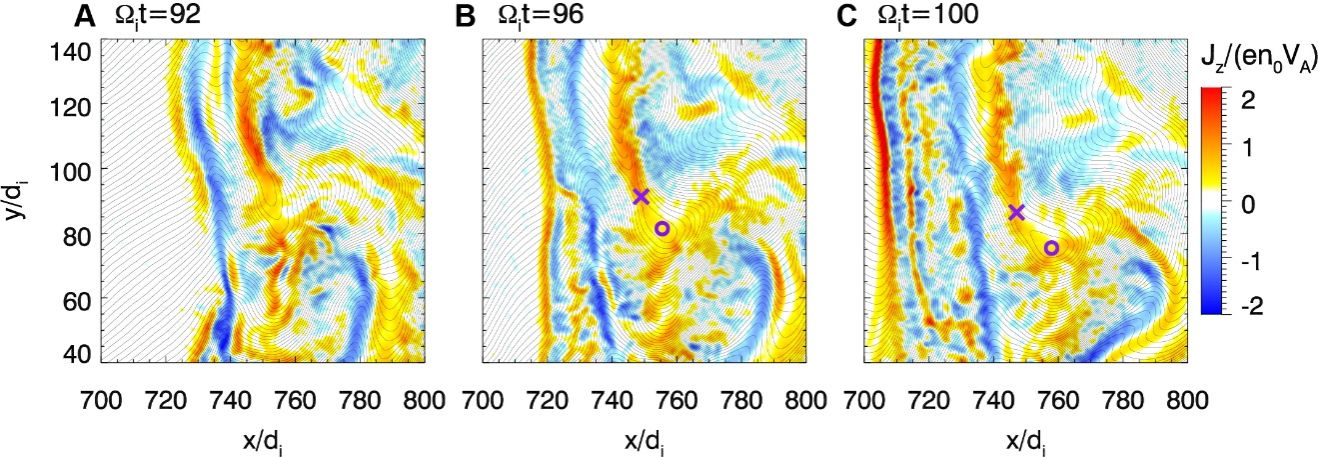Magnetic reconnection is a fundamental physical process in plasmas, through which the magnetic energy is converted into plasma kinetic energy and thermal energy rapidly. Current sheets in turbulent plasma are the key trigger to magnetic reconnection. However, how current sheets come into being remains unresolved.
A research team led by Prof. LU Quanming and Prof. WANG Rongsheng from the University of Science and Technology of China (USTC) of Chinese Academy of Sciences (CAS) discovered that the current sheets in the region downstream of the Earth’s bow shock, magnetosheath, originated from the waves in the region upstream of the shock. The study was published in Science Advances and was chosen as a featured image on the journal's homepage.
The high-speed solar wind interacts with the Earth's magnetosphere, forming bow shocks on the sunlit side of the Earth. The magnetosheath, the region downstream of the Earth’s bow shock, is one of the most typical turbulent environments and is very suitable for studying turbulence dissipation. By analyzing satellite in situ detection of the evolution of plasma waves across the bow shock's upstream and downstream regions, the research team found that as upstream fluctuations passed through the bow shock into its downstream region, the amplitude of the fluctuations was gradually enhanced, thereby forming a coherent current sheet structure in the downstream of the shock. Magnetic reconnection occurred directly within the current sheets, and magnetic energy was rapidly dissipated and converted into plasma kinetic energy and thermal energy.

Reconnecting magnetosheath current sheet in the hybrid simulation. (Image by Prof. LU’s team)
With the help of the hybrid simulation method, the team reproduced the entire process of upstream fluctuations from their generation to evolution into current sheets.
Researchers revealed that upstream fluctuations were fast magnetosonic waves excited by ion resonance instability. As these fast magnetosonic waves propagate downstream, they are continuously compressed and amplified, transforming into current sheets in the magnetosheath. Magnetic reconnection was frequently triggered within these current sheets during these processes.
The Magnetospheric Multiscale (MMS) satellites observation results showed great consistency with the hybrid simulation results, providing sufficient evidence for the formation mechanism and energy dissipation of coherent current sheet structures in turbulent plasma. The results can also be generalized to shocked plasma in other astrophysical and laboratory environments.
Paper link: https://www.science.org/doi/10.1126/sciadv.ado4639
(Written by HUANG Rui, edited by ZHANG Yihang, USTC News Center)